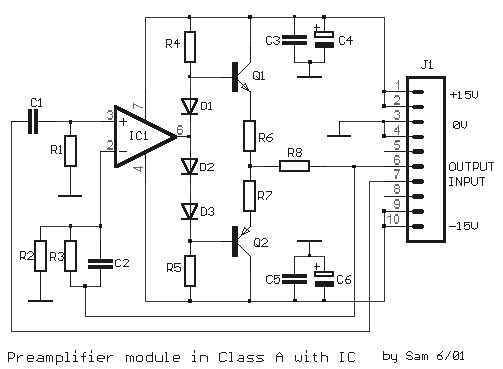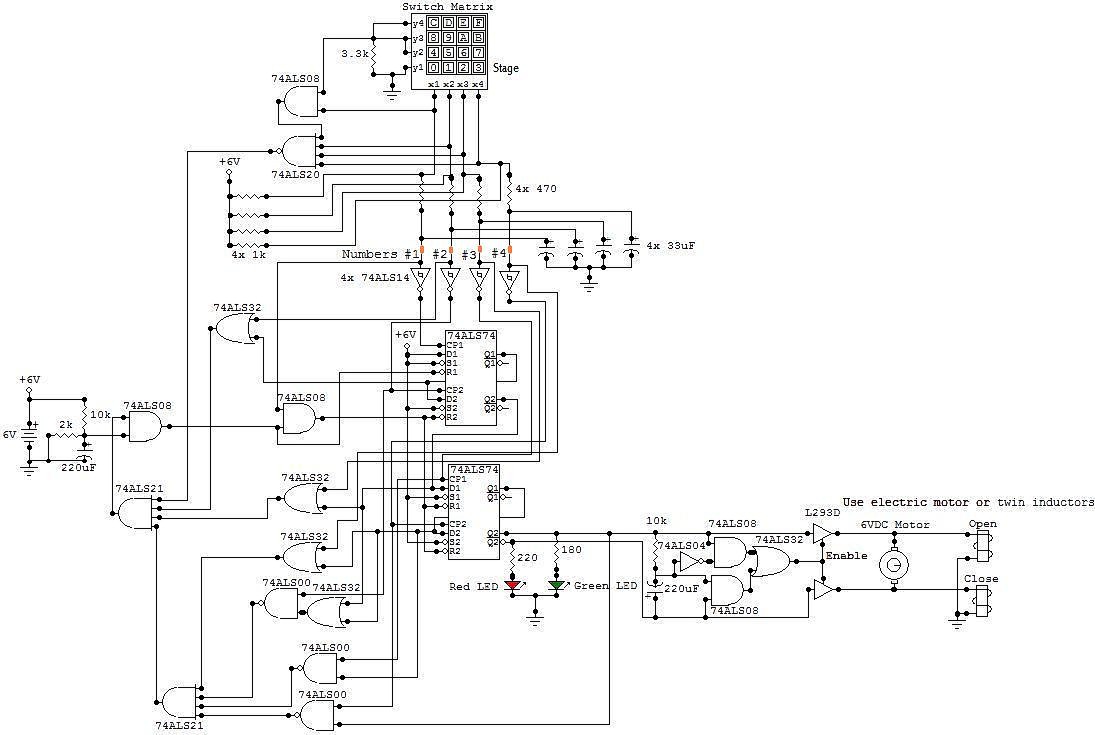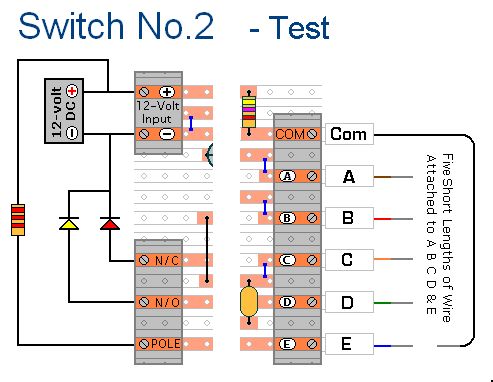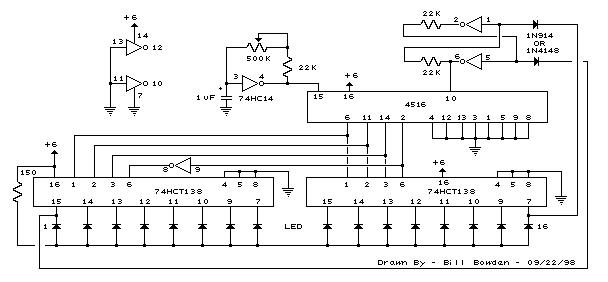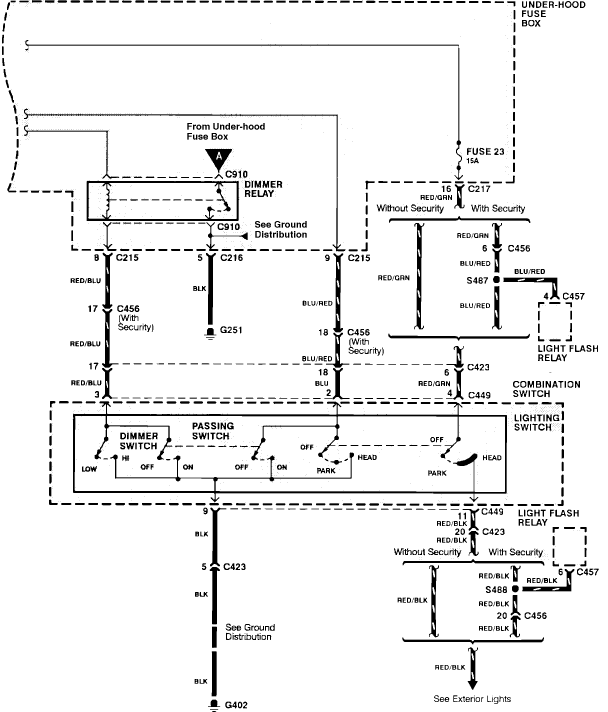
microcontroller Digital bargraph display driver circuit
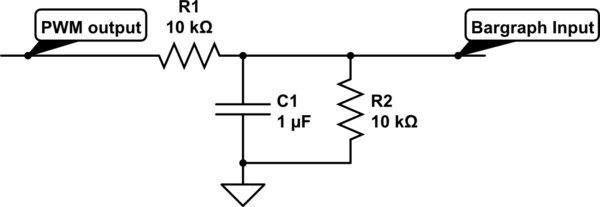
For a project, there is a need to display a progress bar representing the activity performed by a microcontroller unit (MCU). A bar graph display is intended for this purpose; however, the bar graph display driver IC, LM3914, requires an analog input, while the MCU outputs a digital signal. The challenge is to display a value on the bar graph using digital input instead of analog. The bar graph should be able to show values increasing from lower to higher and vice versa. Schematics would be greatly appreciated. The available microcontroller (PIC16F84A) has only two data pins to drive the bar graph display, and using an IO expander would increase the overall system cost. An attempt was made to use IC 4017 for this purpose, but it only activates one output pin at a time.
To implement a digital-to-analog conversion suitable for driving the LM3914 bar graph display using the available digital outputs from the PIC16F84A, a resistor ladder network can be employed. This network will convert the digital signals into a corresponding voltage level that the LM3914 can interpret as an analog input.
The circuit can be designed using the following components:
1. **Resistor Ladder**: A series of resistors can be connected between the digital output pins of the MCU and ground. The values of the resistors will determine the voltage levels corresponding to different digital combinations of the output pins. For instance, using two digital pins can create four distinct voltage levels (00, 01, 10, 11) which can be translated into four different positions on the bar graph.
2. **LM3914 Configuration**: The LM3914 can be configured in bar mode to light up the appropriate number of segments based on the voltage input it receives from the resistor ladder. The reference voltage for the LM3914 can be set using a potentiometer connected to the V+ pin, allowing for adjustment of the maximum value displayed on the bar graph.
3. **Microcontroller Programming**: The PIC16F84A can be programmed to change the state of its output pins according to the desired progress level. By manipulating the two data pins, the MCU can create the necessary digital combinations that will result in the appropriate voltage levels at the output of the resistor ladder.
4. **Schematic Representation**: The schematic will consist of the PIC16F84A connected to two resistors forming a ladder network, which in turn connects to the input of the LM3914. The output of the LM3914 will drive the bar graph display directly.
This approach allows for effective use of the limited pins available on the microcontroller while ensuring that the bar graph display functions correctly without the need for additional costly components such as an IO expander. The resistor ladder configuration is a cost-effective solution for digital-to-analog conversion in this application.For a project I need to display a progress bar of the activity performed by my MCU. For this purpose I am going to use a bargraph display, but the problem is that bargraph display driver driver IC LM3914 uses analog input where as MCU produces a digital output. How can I display a value on bargraph using digital input instead of analog The bargra ph should display values from lower to higher and higher to lower. Schematics will be highly appreciated. I only have two data pins available on uC (PIC16F84a) to drive a Bargraph display, and IO expander will increase the cost of system. I tried IC 4017 for the purpose, but it provides only one ON pin at a time. 🔗 External reference
To implement a digital-to-analog conversion suitable for driving the LM3914 bar graph display using the available digital outputs from the PIC16F84A, a resistor ladder network can be employed. This network will convert the digital signals into a corresponding voltage level that the LM3914 can interpret as an analog input.
The circuit can be designed using the following components:
1. **Resistor Ladder**: A series of resistors can be connected between the digital output pins of the MCU and ground. The values of the resistors will determine the voltage levels corresponding to different digital combinations of the output pins. For instance, using two digital pins can create four distinct voltage levels (00, 01, 10, 11) which can be translated into four different positions on the bar graph.
2. **LM3914 Configuration**: The LM3914 can be configured in bar mode to light up the appropriate number of segments based on the voltage input it receives from the resistor ladder. The reference voltage for the LM3914 can be set using a potentiometer connected to the V+ pin, allowing for adjustment of the maximum value displayed on the bar graph.
3. **Microcontroller Programming**: The PIC16F84A can be programmed to change the state of its output pins according to the desired progress level. By manipulating the two data pins, the MCU can create the necessary digital combinations that will result in the appropriate voltage levels at the output of the resistor ladder.
4. **Schematic Representation**: The schematic will consist of the PIC16F84A connected to two resistors forming a ladder network, which in turn connects to the input of the LM3914. The output of the LM3914 will drive the bar graph display directly.
This approach allows for effective use of the limited pins available on the microcontroller while ensuring that the bar graph display functions correctly without the need for additional costly components such as an IO expander. The resistor ladder configuration is a cost-effective solution for digital-to-analog conversion in this application.For a project I need to display a progress bar of the activity performed by my MCU. For this purpose I am going to use a bargraph display, but the problem is that bargraph display driver driver IC LM3914 uses analog input where as MCU produces a digital output. How can I display a value on bargraph using digital input instead of analog The bargra ph should display values from lower to higher and higher to lower. Schematics will be highly appreciated. I only have two data pins available on uC (PIC16F84a) to drive a Bargraph display, and IO expander will increase the cost of system. I tried IC 4017 for the purpose, but it provides only one ON pin at a time. 🔗 External reference
